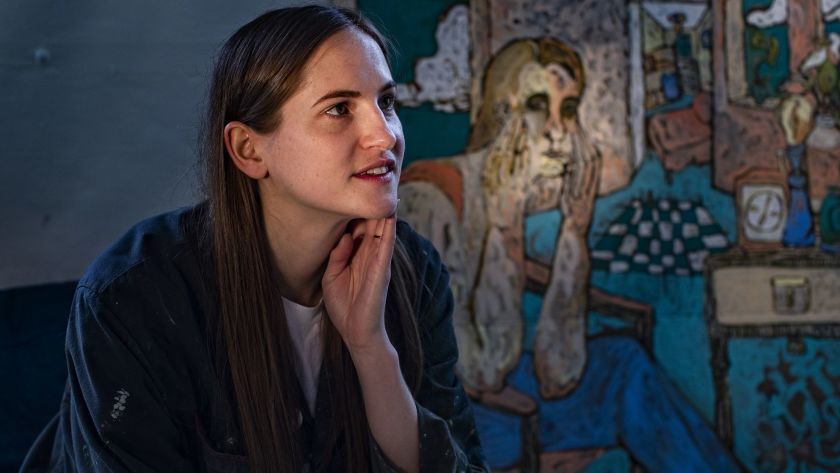LA Weekly speaks to Gretchen Andrew about her virtual reality art show
At this Gallery Show, the Art isn’t on the Walls – it’s in Virtual Reality
By Liz Ohanesian
Gretchen Andrew was living the tech life. After studying Information Systems at Boston College, she moved to San Francisco and started work in Google’s internal products department. “The job at Google was the dream job,” she says. However, it wasn’t Andrew’s dream. After two years, she left tech to become a painter and moved from San Francisco to London.
“When I was in tech, I noticed that my interests were more in what technology could do than in the technology itself,” says Andrew. As a painter, she’s learning the extent to which she can use emerging technologies and the discoveries to impact the art world.
On Thursday, Andrew debuted “Alternate Reality” inside West Hollywood’s De Re Gallery, running through March 9, which claims to be the world’s first virtual reality art show. Only one of the works from this collection appears on a gallery wall. However, that same piece, and a host of others, hang inside a computer-generated virtual reality replica of this same space.
Since the introduction of products like Zeiss and Oculus Rift, virtual reality has become a hot topic in the tech world.Andrew, who collaborated on this exhibition with immersiv.ly and London-based app-makers Amplified Robot, is showing just how deep artists, and art lovers, can take VR technology.
“I’m very interested in the way that the physical relates to the digital and back and forth,” says Andrew.
Andrew makes her own oil paints and works on canvases that she learned to stretch by watching YouTube videos. While Andrew’s work is steeped in centuries of tradition — her favorite artists are Van Gogh and Munch — she has frequently used Google Glass while painting and incorporated the footage, as well as progress photos, into her online presence and, subsequently, in this show.
With a VR art exhibition, anyone with access to the technology can view the show without being in the same physical space as the art. Oculus Rift users can download “Alternate Reality” and view it at home. But for Andrew, this technology also has made it possible to make the process part of the show. Many of the pieces are enhanced with bonus content. Some works reveal progress shots — like a charcoal underdrawing or Google Glass footage— as viewers move their eyes across the virtual gallery.
By using VR, Andrew can easily discuss her influences. Starry Night, For Mom is her take on the famed Van Gogh painting. In virtual reality, the original and Andrew’s version fade into and out of each other. Even if those two paintings were to neighbor each other on a wall, we wouldn’t see them like this. Additionally, Andrew narrates the VR experience. This approach creates an experience where people can feel as though they are watching the works develop from concept to finish.
Steph Sebbag, owner of De Re Gallery, says VR can come in handy when the pieces they’re selling aren’t in the gallery, and are instead in studios across the world. They can invite customers to visit the gallery and check out the work through VR. “Instead of shipping the artwork back and forth, we’re actually able to ship the artwork directly to the client,” Sebbag notes. While art buyers already make purchases based on digital images, with VR, they can get a better idea of how the piece will look in person.
Another advantage, Sebbag says, is that it gives galleries the option to host multiple shows at once. While gallery goers are able to check out Andrew’s show in virtual reality, they can also take a look at the works of various artists who work with De Re that occupy the actual walls, hanging alongside Andrew’s single real-life work. “I would hate to see the brick-and-mortar physical space go away. I don’t think that’s ever going to happen,” says Sebbag. “This just opens it up.”
Andrew agrees. After all, she makes her own pieces by herself in a studio in London. “The physical isn’t going anywhere. We still have these bodies,” she says. “The Matrix is not around the corner.”
Link to the article →


